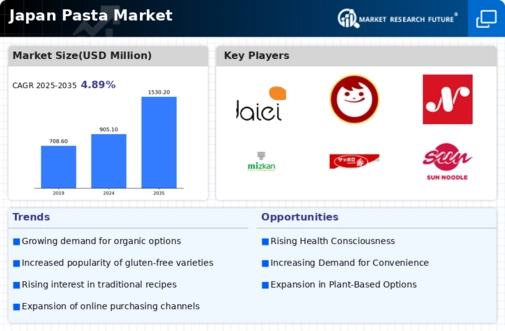The Japan Pasta Market has witnessed significant growth and transformation over the years, driven by evolving consumer preferences and the increasing popularity of international cuisines. As pasta versatility expands in Japanese households, the competitive landscape reveals a dynamic interplay among established players and emerging brands, each vying for market share.
With a population keen on incorporating diverse food options into their diets, pasta has transitioned from a mere imported delicacy to a staple in Japan, giving rise to a variety of products tailored to local tastes. Companies are focusing on product innovation, marketing strategies, and distribution channels as the demand for quality, authenticity, and convenience becomes the key drivers in this sector.
Itoham Yonekyu Holdings is a prominent player in the Japan Pasta Market, recognized for its commitment to quality and innovation. The company boasts a strong market presence, leveraging its extensive distribution network to reach a wide consumer base. Its strengths lie in its ability to adapt traditional pasta recipes to suit Japanese tastes, providing a unique blend of authenticity and local flavor.
By investing in advanced production processes and utilizing high-quality ingredients, Itoham Yonekyu Holdings has successfully positioned itself as a trusted brand, resonating with health-conscious consumers. The company’s dedication to sustainability and responsible sourcing has further enhanced its reputation, enabling it to maintain a competitive edge in an increasingly crowded marketplace.
Daiei is another significant player in the Japan Pasta Market, offering a diverse range of pasta products tailored to local preferences. Known for its commitment to providing quality food to consumers, Daiei has built a strong brand presence across the region.
The company has successfully diversified its offerings, showcasing a variety of pasta types ranging from traditional to innovative flavors that appeal to a wide audience. Daiei's strengths include its robust distribution channels and strategic partnerships that enhance its market positioning.
The company has pursued mergers and acquisitions to expand its footprint in Japan, integrating complementary brands that bolster its product portfolio. This strategic growth approach has not only reinforced Daiei's market presence but also allowed it to respond more effectively to changing consumer demands within the pasta segment.









